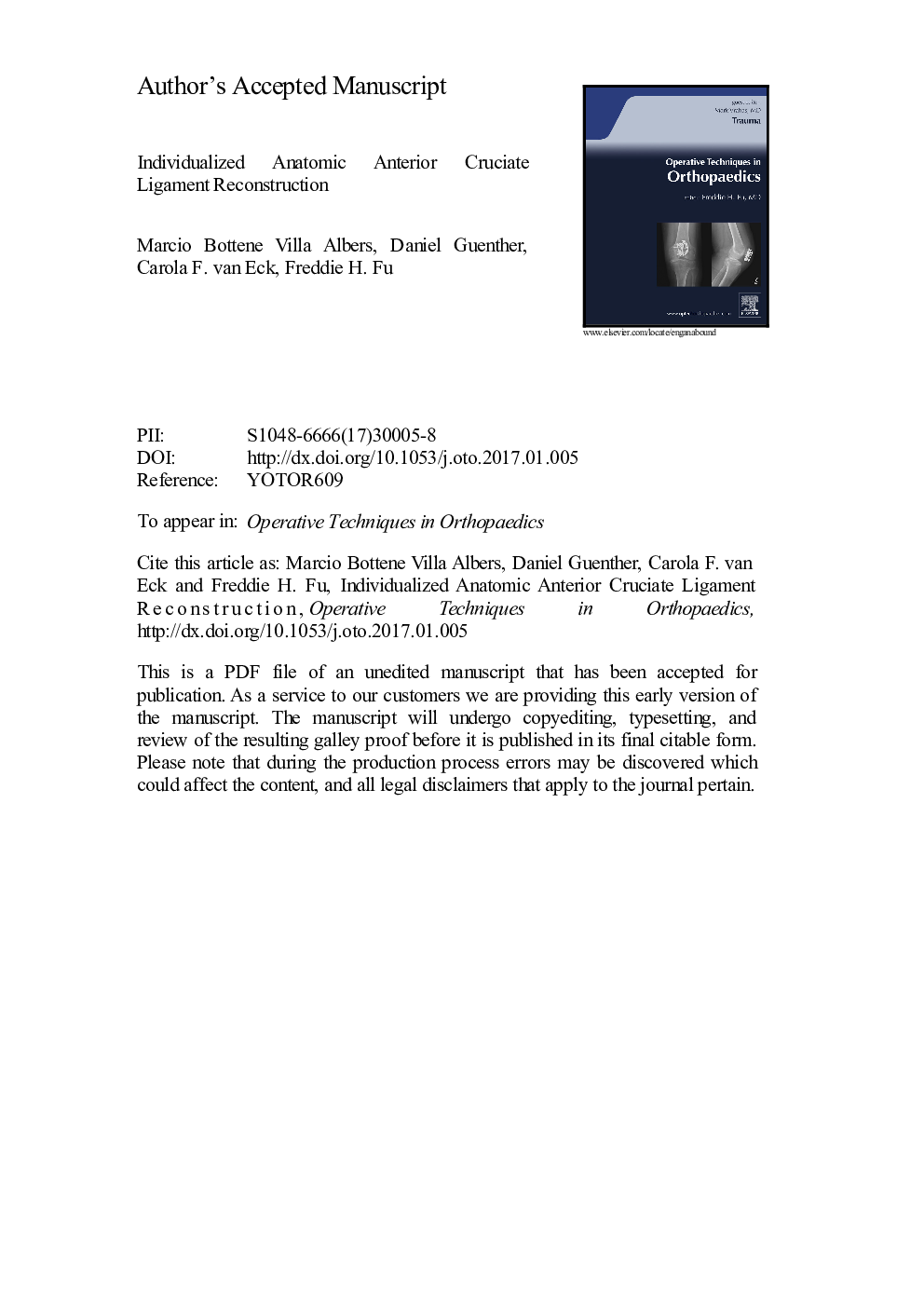| Article ID | Journal | Published Year | Pages | File Type |
|---|---|---|---|---|
| 5710894 | Operative Techniques in Orthopaedics | 2017 | 21 Pages |
Abstract
Anterior cruciate ligament (ACL) rupture is a common injury particularly among young active individuals. ACL injury leads to increased knee laxity and abnormal knee biomechanics that may prevent return to sports and predispose to early onset degenerative changes in the joint. Therefore, optimizing ACL injury treatment is of great interest to the sports medicine field. ACL reconstruction (ACLR) is considered the treatment of choice for most patients, especially in those involved in cutting and pivoting activities, often allowing them to return sports. ACLR has been based traditionally on standardized techniques that neglected the individual anatomy of the patient. Individualized anatomical ACLR is considered a new concept that is based on tailoring the ACL surgery to the individual patient. It uses preoperative measurements on plain radiographs and magnetic resonance imaging as well as intraoperative measurement of the patients' native ACL and knee anatomy to precisely determine the variations in the size of femoral and tibial insertion site and size and morphology of the intercondylar notch. The ultimate goal of individualized anatomical ACL reconstruction is to restore the ACL to its native dimensions, collagen orientation, and insertion site to replicate the individual anatomy as closely as possible. In this concept, the choice to perform a single- or double-bundle reconstruction or augmentation depends on aforementioned variations in the anatomy of the ACL and the knee joint.
Related Topics
Health Sciences
Medicine and Dentistry
Orthopedics, Sports Medicine and Rehabilitation
Authors
Marcio Bottene MD, Daniel MD, Carola F. MD PhD, Freddie H. MD, DSc (Hon), DPs (Hon),
